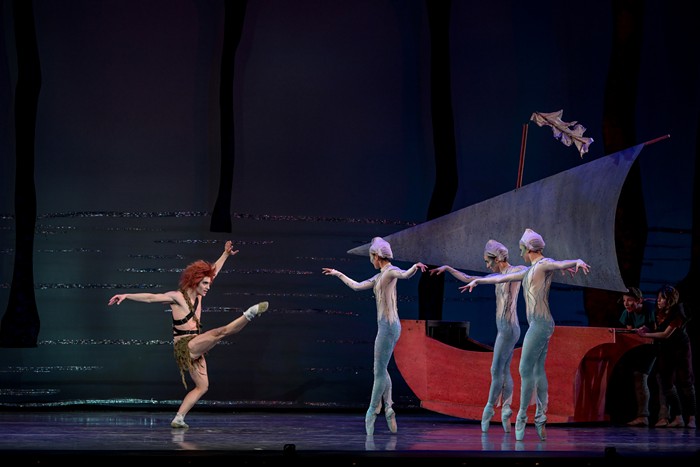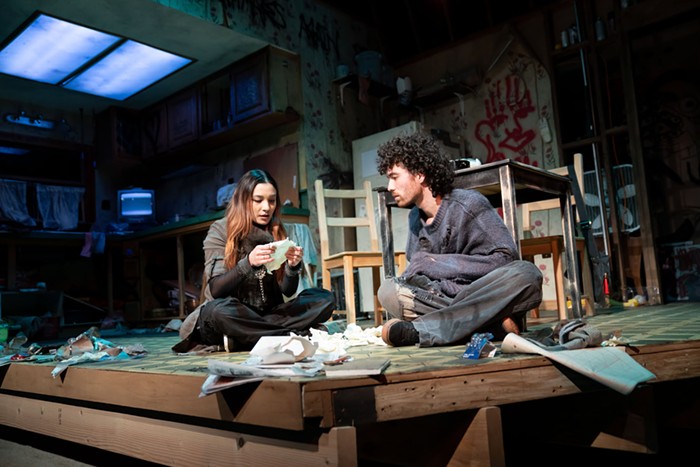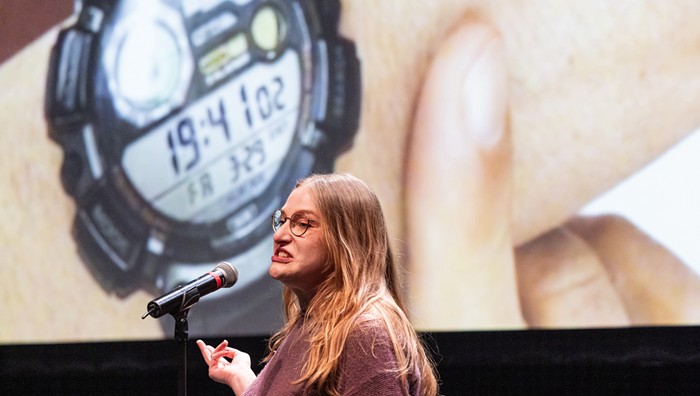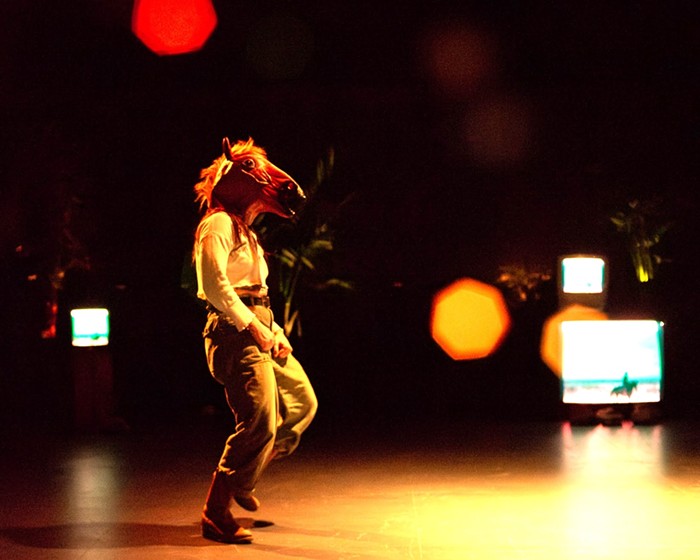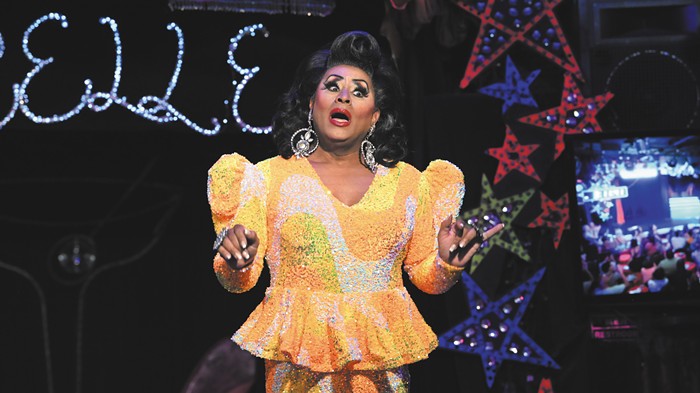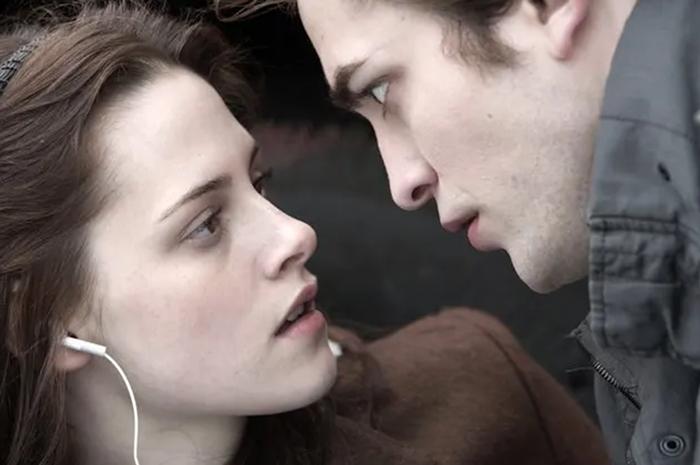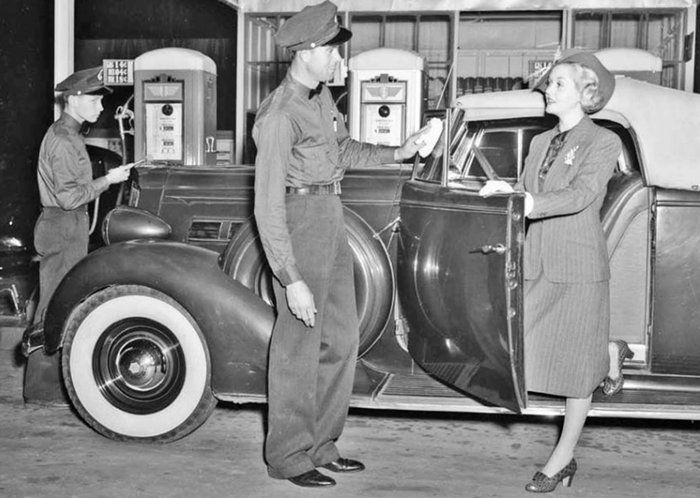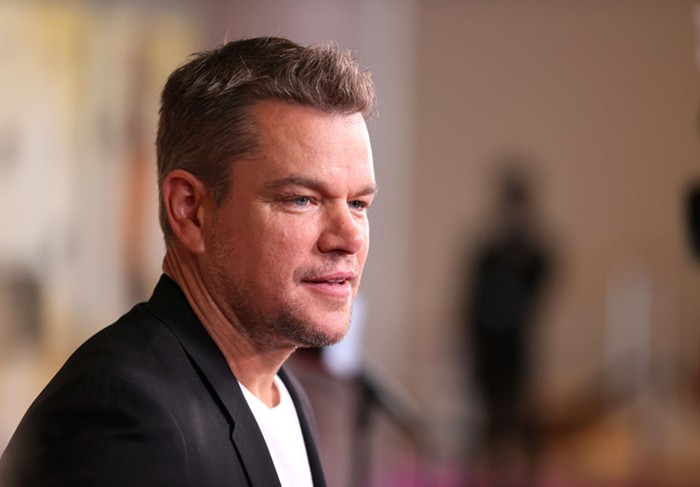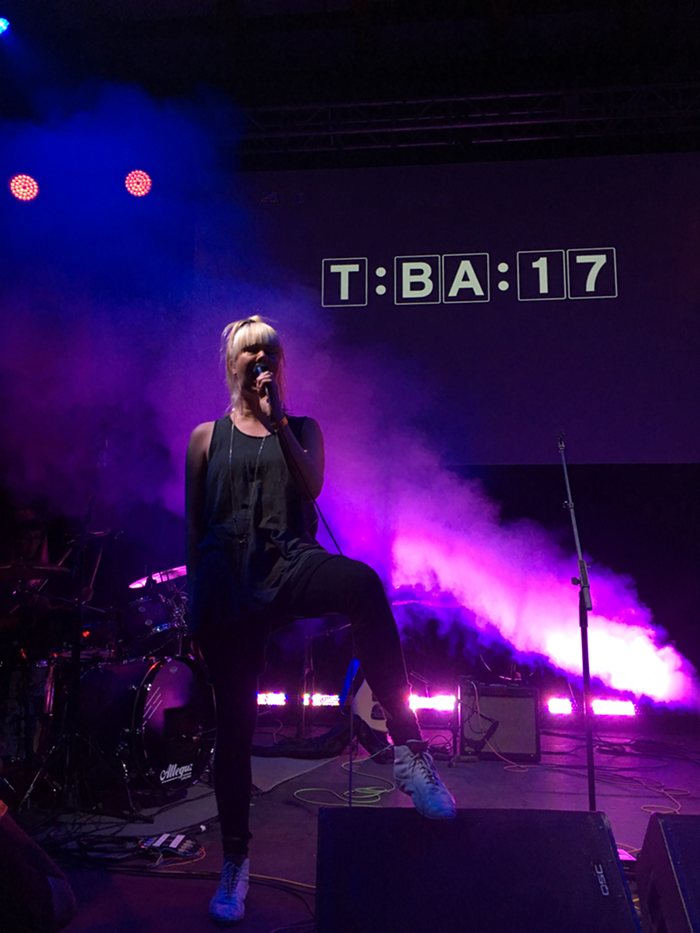
I attended the EMA TBA set with some expectations. 1) After a week of vociferous social media spamming, I expected the show might sell out. 2) Based on EMA’s 2015 PS1 MOMA installation—which involved VR headsets and stage design resembling a shrine to a messy living room—I thought the performance might be delicate and involve the necessary danger of headset cooties. But when I arrived things looked sparse—sparse as HELL.
“I thought more people would be here,” I whined to an acquaintance. “This room is just huge,” she replied. The only all-ages performance of TBA 2017, EMA was scheduled for a somewhat regrettable 10:30 pm Sunday night slot. It was hard to imagine youths making it over to PICA on a school night. Looking again, I realized things were better than I'd thought. There were probably 100 people milling in and out of the beer garden. They just felt like pocket change in the 400-person-capacity 15 NE Hancock space. Its second year as TBA's central location for the Works, the Hancock building's tall industrial ceilings have a reputation for dwarfing bands that try to play beneath them.
“Do you think anyone will be dancing?” my friend asked. “Yes.” I replied. “Anyway, we’ll stand up front so we won’t be able to see if they’re not dancing.” The nice thing about watching music performances at an art festival is that it’s the only time there’s guaranteed to be no pushing. [Eds. note—There is sometimes still pushing.]
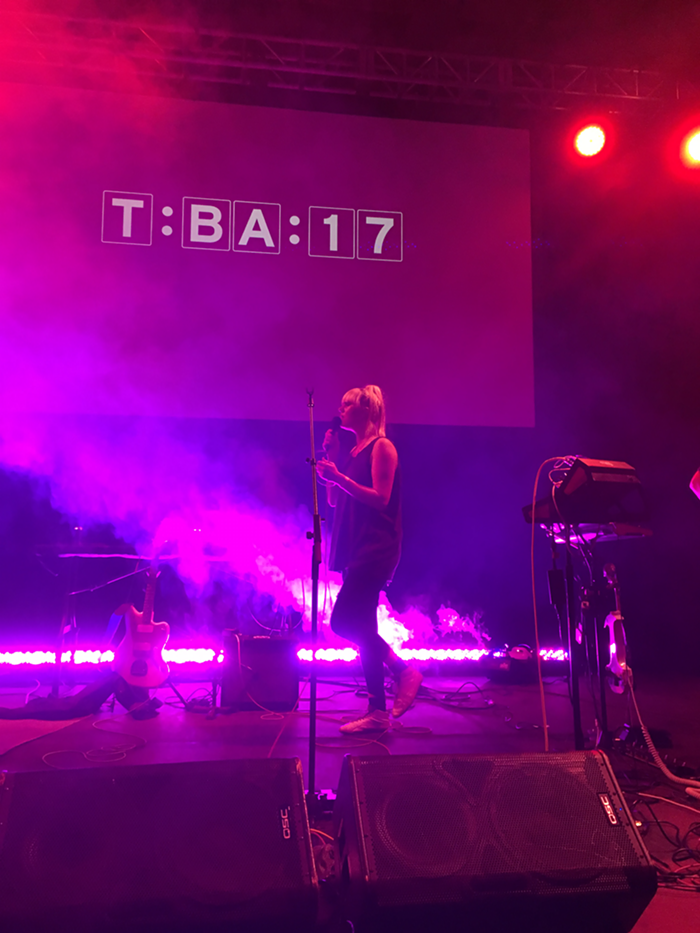
EMA—both Erika M. Anderson’s initials and her band’s name—took the TBA stage under stark blue lights that made everything they touched appear overly contrast-filtered. Anderson (guitar, synth, vocals), Susan Lucia (drums, backing vocals), and Leif Shackleford (electric viola, bass, synth, 2012 iPad, everything else) launched into the energetic, brooding “I Wanna Destroy” from their newest record Exile in the Outer Ring. It was wonderful. Everyone danced.
Puff went the smoke machine. Two dueling professional photographers in the front of the crowd acted out the tragic opera of most music photographers, as they strained and worried and clicked fiendishly. I forgot the size of the room and the smallness of the number of people scattered within it. Oh shit I thought. I forgot how good EMA is. “I’m gonna head-bang!” my friend shouted as she began to head-bang.
Reviewers frequently namecheck PJ Harvey and Kim Gordon when describing EMA’s smooth and husky vocals. I’ve always loved this Pitchfork interview where Anderson says, “People have always used the word 'haunting' to describe my music— which in some cases can just be lazy shorthand for some sort of melancholic reverbed-girl-singing.” She goes on to say there might be something to it after all, because sometimes her songs feel like spells or exorcisms.
Watching EMA live, it’s not hard to believe in magic. Her performances are enveloping and arresting. They're melding a rock aesthetic with casual, arty synth fumbling—all of the things I like about music pooling together in one place. EMA also isn’t afraid to apply her spoken-word singing style to something more anthemic (see “California” on the 2011 Past Life Martyred Saints and the new record “33 Nihilistic and Female”). She sings in declarative statements. While Anderson rose through the indie noise rock ranks on her comfort with dead channel drone and spoken word whisper loops, when you get on your bike after the show what sticks with you are the songs.

